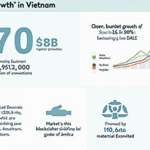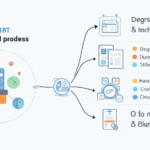Introduction
In the rapidly evolving landscape of digital assets, Bitcoin remains at the forefront, capturing attention with its potential for substantial returns. In 2024 alone, the cryptocurrency market ballooned to a valuation surpassing $3 trillion, prompting traders and institutions alike to explore various strategies for maximizing returns. Among these strategies, market making stands out as a crucial element for enhancing liquidity and facilitating trade execution.
With the total trading volume crossing $1 trillion per month, the need for efficient market making has never been more apparent. As we delve deeper into Bitcoin market making strategies, we offer insights and practical tips while addressing the unique dynamics of the crypto liquidity landscape. Let’s break it down.
Understanding Market Making
Market making involves providing liquidity to financial markets by placing buy and sell orders for assets, thereby facilitating smoother transactions. Essentially, market makers act as intermediaries, profiting from the bid-ask spread. In the crypto sphere, where volatility is high and trading volumes can vary dramatically, effective market making strategies become even more critical.

How Market Makers Operate
- Bid-Ask Spread: Market makers set both buy (bid) and sell (ask) prices around the current market price to ensure they can complete trades for both buyers and sellers.
- Liquidity Provision: By consistently offering buy and sell orders, market makers enhance liquidity, allowing for easier entry and exit points for traders.
- Risk Management: Advanced strategies such as hedging and utilization of algorithms are deployed to minimize exposure while maximizing profit potential.
Key Strategies for Bitcoin Market Making
When devising your Bitcoin market making strategy, consider these four vital approaches:
1. Automated Trading Algorithms
Automated trading algorithms can significantly enhance efficiency by leveraging speed and precision that manual trading typically lacks. Here’s how they function:
- Real-time Adjustments: Algorithms can quickly adapt to price fluctuations.
- Backtesting: Traders can test their strategies against historical data before deployment.
- Reduced Human Error: Automated systems mitigate risks associated with emotional trading.
2. Market Depth Analysis
Understanding market depth is critical for market makers to gauge demand and supply:
- Order Book Analysis: Analyzing the order book gives insights into the market sentiment.
- Support and Resistance Levels: Identifying these levels helps you optimize your order placement for profitability.
3. Feedback Loop Mechanisms
Implementing a feedback loop is essential in adapting to market changes:
- Continuous Monitoring: Monitor trades, volumes, and market responses in real-time.
- Adaptive Strategies: Modify strategies based on real-time feedback to maintain competitiveness.
4. Effective Risk Management
Risk management cannot be overstated in market making:
- Hedging Techniques: Use options and futures to hedge against market downturns.
- Diversification: Spread trades across different exchanges and currencies to reduce exposure.
Market Making in the Vietnamese Crypto Landscape
Vietnam’s crypto market is witnessing rapid growth, with users expected to increase by 25% year-on-year. This surge presents a plethora of opportunities for market makers. To tap into this potential, consider the following:
User Behavior Insights
Understanding the psychology of Vietnamese traders can help market makers tailor their strategies. Factors to consider include:
- Local Demand: Assess which cryptocurrencies are gaining traction.
- Community Engagement: Engaging with local crypto communities can provide insight into emerging trends.
Conclusion
Bitcoin market making strategies are essential for enhancing liquidity and optimizing trade execution in the constantly shifting crypto environment. As the Vietnamese crypto market continues to grow, market makers have a unique opportunity to capitalize on this accelerating trend.
By deploying advanced trading algorithms, understanding market dynamics, implementing feedback loops, and engaging in effective risk management, market makers can position themselves advantageously. As you explore these strategies, remember to continuously update your approach based on market conditions and user behavior.
To learn more about effective trading strategies, visit hibt.com. Building a successful market-making strategy may require continuous adaptation and diligence, but with the right mindset and tools, the rewards can be significant.
Explore the world of trading with bitcryptodeposit.







